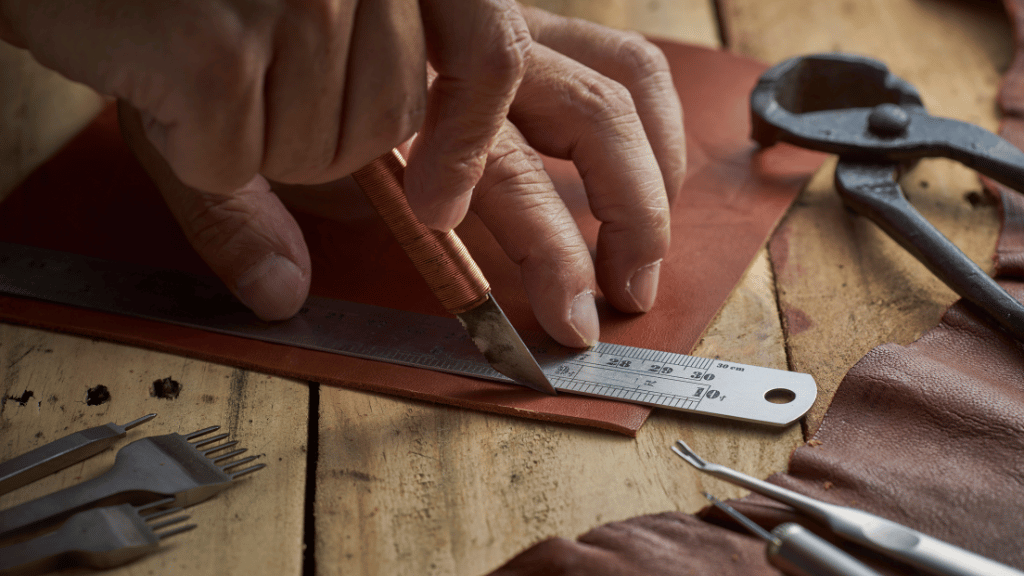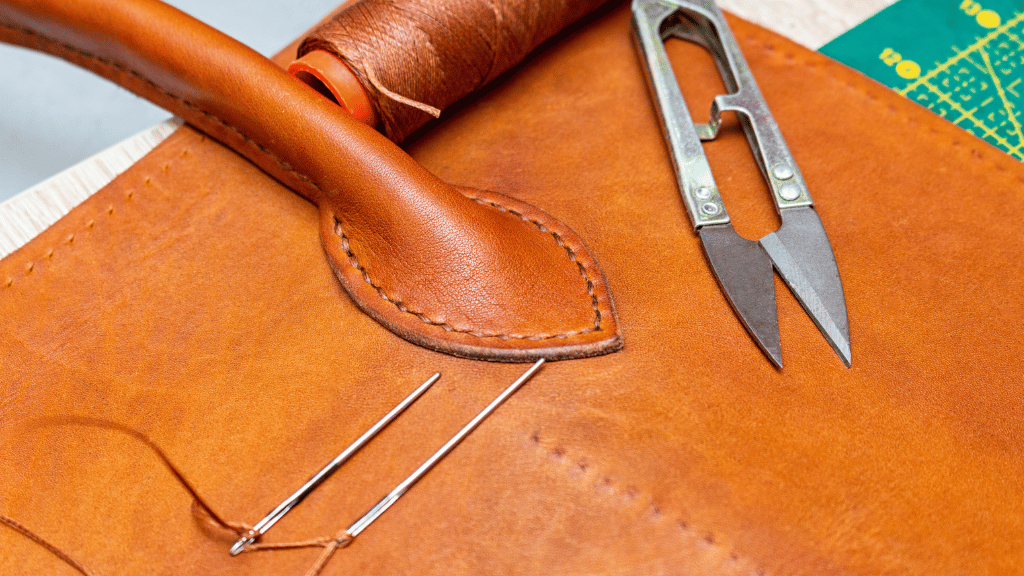In the realm of bag manufacturing, the right material is what brings a design to life. It plays a crucial role in the quality, end-use, and overall appeal of the final product. It is essential for ensuring customer satisfaction and developing a strong brand identity. One material that has stood the test of time and continues to reign supreme in the bag manufacturing world is leather.
Below, we will delve into the advantages, limitations, production considerations, and environmental impact of using leather for handbag production, so that you can decide if this time-honored material is right for your brand.
What Is Leather?
Leather is a smooth yet durable material made from animal hides. It is most commonly derived from cattle, though exotic hides from alligators, snakes, and ostrich are also popular in the fashion industry.
Leather possesses inherent characteristics that make it highly suitable for bag manufacturing, most notably its durability, strength, and natural aesthetic appeal. Bag manufacturers can utilize leather as the sole or primary material, capitalizing on its resilient qualities and beautiful texture. Designers choose leather for its ability to undergo various processing methods, resulting in diverse textures and finishes.
The Advantages of Using Leather in Bag Manufacturing
- Durability. Leather’s exceptional durability makes it renowned for enabling bags to withstand daily wear and tear with ease. It is resistant to abrasion, punctures, and fading, ensuring that the bag maintains its appearance and a high level of quality for years to come. With proper maintenance, a leather bag can last for decades, making it a worthwhile investment in the eyes of many consumers. It’s a popular choice for almost any type of bag, from everyday totes to travel duffles and special occasion clutches.
- Superior Quality. Leather handbags are typically associated with high levels of craftsmanship and attention to detail. The material lends itself well to intricate designs, making it possible to create unique bag styles.
- Natural and Breathable. Due to its organic origins, leather is a natural material that allows air circulation. It prevents moisture build-up and maintains the bags’ freshness. This feature is particularly beneficial for bags that carry personal belongings. This is why leather is such a popular choice for everyday and travel bags.
- Versatility. Leather can be dyed, embossed, or treated to achieve a wide range of colors, textures, and patterns. The vast amount of customization options allow designers to create customized bags that meet the specific preferences of their customers.
- Timelessness. Leather exudes a timeless elegance that is always in style. Bags crafted from leather can effortlessly complement any outfit or occasion, making them a versatile and in-demand accessory for consumers.
The Limitations of Using Leather in Bag Manufacturing
- Cost. Leather is generally more expensive than synthetic materials, which can affect the final price of the bag. However, it is important to consider the long-term value that leather offers. The exceptional quality of leather bags positions them as coveted luxury goods in global markets.
- Ethics & Animal Cruelty. As an animal byproduct, leather does raise concerns regarding ethics and animal cruelty. Animal welfare practices vary across regions and suppliers, making it challenging to ensure that the leather used in bag production comes from sources that adhere to humane treatment standards. Animals can be subject to inhumane conditions, such as overcrowding, poor living conditions, and unethical slaughtering practices. To vegans and many vegetarians, leather will always be an unethical choice.
Fortunately, the market now offers a wide range of alternative faux leather that replicate the look and feel of leather without the use of animals. These vegan leather alternatives are typically made from synthetic materials like polyurethane (PU), but new innovations have led to the creation of leathers crafted from organic materials such as cactus, apples, and tree leaves. - Durability in Certain Conditions. While leather is generally durable, it does have limitations in extreme conditions. Excessive exposure to moisture or prolonged contact with water can cause the leather to warp, become discolored, or develop mold. Therefore, bag manufacturing may be more difficult in humid or rainy climates.
- Limited Color Options. Although leather can be dyed into various colors, its range may be more limited than synthetic materials. This can restrict design possibilities for manufacturers seeking a wide array of vibrant or unconventional color choices.
Leather Production & Manufacturing Considerations

Working with leather bags requires specialized equipment, such as leather cutting and skiving machines, and techniques. Achieving exceptional handbags of high quality demands precise cutting, stitching, and finishing techniques applied to the leather. Skilled craftsmanship plays a pivotal role in attaining the desired results. Manufacturers must also consider factors such as hide selection, storage, and maintaining proper conditions to prevent damage or deterioration of the leather.
Leather Sustainability & Environmental Impact
The environmental impact of leather is a hot topic within the fashion industry. Many people consider the material to be a sustainable choice thanks to its natural origins and supreme durability, but certain practices can offset these benefits.
The leather industry has faced criticism, particularly due to its ties to animal agriculture and the harm caused by certain tanning processes (notably chrome tanning, which often releases toxic chemicals into local water supplies). However, there are eco-friendly alternatives, such as vegetable tanning (a centuries-old process that uses naturally-derived tannins), which are widely used by sustainable fashion brands.
Many environmentally-conscious individuals promote the use of leather due to its long lifecycle. Leather bags will typically outlast synthetic ones. Many faux leather will start flaking and breaking down after months of use, while a genuine leather bag can maintain its appearance for years. As a natural material, leather is biodegradable and will return to the earth once it does start to disintegrate. Faux leathers can take up to 500 years to decompose and contain detrimental microplastics and chemicals that seep into the earth.
It’s worth noting that the industry has been actively addressing sustainability issues in recent years. Many brands are opting for vegetable tanning over chrome tanning. Certifications such as the Leather Working Group (LWG) ensure the implementation of sustainable practices.
Conclusion
Leather has long been a favored material for bag manufacturing due to its durability, timeless appeal, and superior quality. While it may come with a higher price tag and is not suitable for the vegan market, the numerous benefits it offers make it a preferred choice for many bag manufacturers. Whether you’re looking to enter the luxury bag market or you simply want to craft everyday designs that will stand the test of time, leather is definitely a material you should consider for your bag manufacturing needs.

Great read on the significance of leather in bag manufacturing! This article beautifully highlights the timeless elegance and durability that leather brings to fashion. The insights provided add depth to understanding the craftsmanship behind leather bags. Well done!
Thank you for appreciating the article! We are really glad to know you found the insights on leather craftsmanship in bag manufacturing insightful.